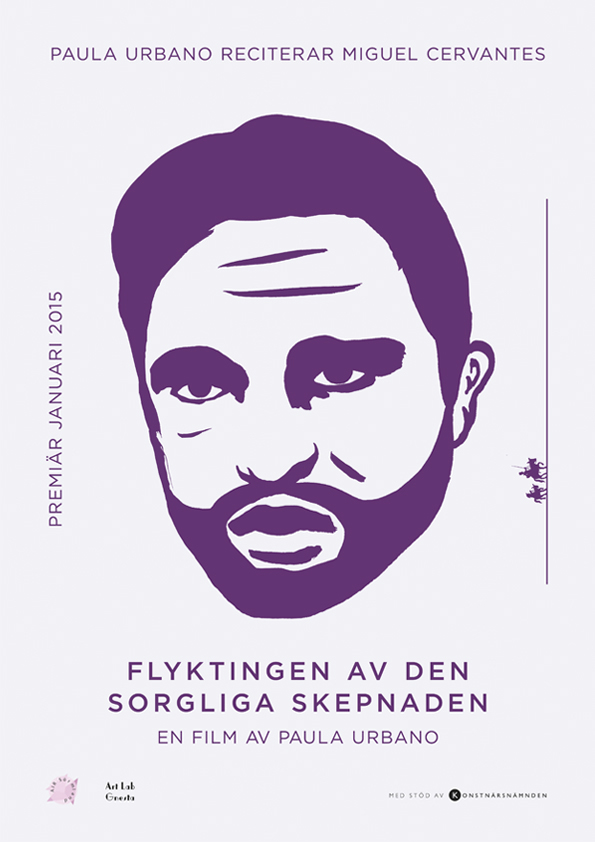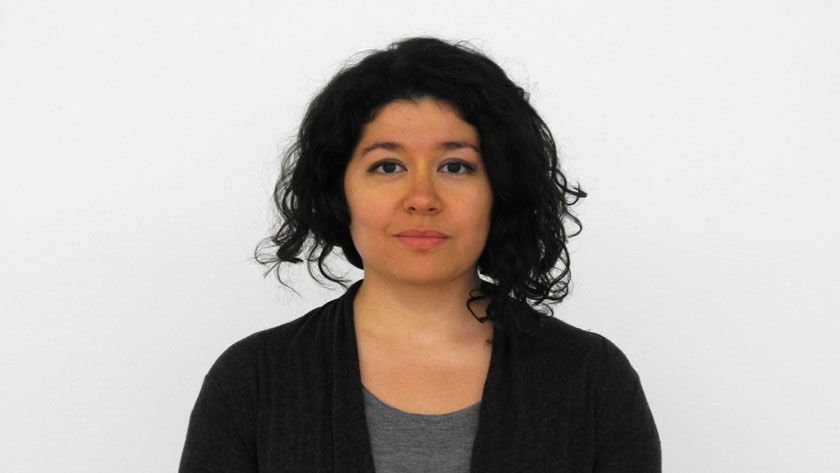Performance Nunca Más 11/9 2023
The Pact, 7:42 min, 2021, colour, 16:9, HD
Videoverk av konstnären Paula Urbano där vi tas med på en tidsresa tillbaka till 1994 i Skärholmen och Kungens kurva. Samtida bilder blandas med minnen och drömmar. PAKTEN handlar om vänskap, klass och motståndsstrategier. Hur många lager rymmer en plats? Filmen är en del av miniutställningen Kungens kurva stories, producerad av Stockholms läns museum.
Se Kungens Kurva Stories:
Start
________________________________________________________________________________________________________________________________________________________
In the Waiting Room of Desertion, 8:52 min, 2014, colour, 16:9, HD
I flyktens väntrum, 8:52 min, 2014, färg, 16:9, HD
Paula Urbano tolkar Flyktingen genom Sarah Kanes dramatiska verk “Psykos 4:48”.
Se dokumentation från installation på Art Lab Gnesta.
________________________________________________________________________________________________________________________________________________________
The Refugee of the Sorrowful Figure, 44 min, 2015, colour, 16:9, HD
Flyktingen av den sorgliga skepnaden, 44 min, 2015, färg, 16:9, HD
Paula Urbano lärde känna en man som sökt asyl, men blivit utvisad från Sverige. Filmen bygger på deras tid tillsammans, då hon följde honom mellan Flen, Eskilstuna, Bagdad och Teheran. Vilka kroppsliga erfarenheter innebär det att leva i ovisshet, att lägga sitt öde i någon annans händer? Med referenser som Don Quijote gestaltas ett möte som också berör konstnärens uppgift. Tittaren får själv navigera bland möjliga historier, och konfronteras kanske med sina egna fördomar längs vägen.
________________________________________________________________________________________________________________________________________________________
Unnoted Notes / Oantecknade Anteckningar / Anotaciones Desapuntadas
Unnoted Notes is a choreopoem about the unspoken. The monotone inflection utilizes the choreopoetry in an attempt to engage the audience and performer(s) that seem not to be listening–or perhaps internalizing the voice as much as she is.
The text is set to an ambient soundscape by collaborator, Thomas Watkiss who wrote a special piece of this performance to build emotional timbre of the inner voice speaking aloud. -TW & PU.
________________________________________________________________________________________________________________________________________________________
It´s we, us
Det är vi /It´s we, us 4:05 min, 2013, sound 5:1, färg, 16:9, HD
A video about race performativity in everyday life. In a silent speech Urbano turns to a stranger suggesting to see, listen and admit “them” in the “us” i.e her in the “we” instead of defining, comparing or judging.
In distribution by Filmform, the Swedish Artfilm and video Archive www.filmform.com
________________________________________________________________________________________________________________________________________________________
Life as a Lie/ Livet som lögn / Mentiramente
Livet som lögn, Mentiramente, Life as a Lie 9:18 min, 2012, stereo, färg, 16:9, HDV
Did her mother marry Henrique or was Henrique the one who found her on the steps, where her mother had left her as an infant? In different interviews, Eugenia retells the made up stories she was told as a child growing up in Argentina during the reign of the military junta.
– Tobias Åkesson in 35th Göteborg International Film Festival Catalogue.
________________________________________________________________________________________________________________________________________________________
Here and there
Här och där / Here and there, 17:48 min, 2011, stereo, färg, 16:9, HD
How would it be if we sat down and seriously thought through how our lives would have looked like if we had grown up anywhere else? This is what Paula Urbano for a few weeks in the summer of 2011 has been investigated. By setting up a mobile recording studio at selected locations in Fittja she asked residents to answer a question: how would your life look like if you stayed at the place where you were born? Through the responses which the artist had in these intimate encounters with the participants, we get a unique insight into residents’ life stories in Fittja; of what life looked like for the inhabitants of other places in the world and in Sweden if they had been left. Perhaps it had not changed much, but maybe the move to Fittja been crucial in their choice of occupation, living conditions and family situation.
In distribution by Filmform the Swedish Artfilm and video Archive www.filmform.com
________________________________________________________________________________________________________________________________________________________
Her Life / La vida es ella / Hennes liv
Hennes liv / La vida es ella / Her Life, 12:33 min, 2008, stereo, färg, 4:3, DV
Her Life presents a narrative constructed through the stories told by multiple women in Santiago, Chile, who describe the childhood, teenaged and adult experiences of an unnamed “Her”. The film interviews the women as they share intimate stories about this “Her”, creating a multi-faceted impression of growing up and living through the Pinochet dictatorship, as well as falling in love and confronting challenges linked to gender roles and social expectations. On the whole, they describe building a life as a young woman in Santiago.
Urbano, herself a child of Chilean political refugees, grew up in Sweden and through many of her works, studies the experience of migration and alienation on political, cultural and identity levels. In this work, she investigates how her own life could have been should she have grown up in Chile rather than have a personal history of immigration and childhood in a Swedish context. The women interviewed step into this exploration, providing their memories as a material to shape what could have been in Urbano’s case. Each of the women interviewed in the work are around the artists’ age and have lived what in other circumstances, she might have. In this way, Urbano builds her own fictitious past by asking the women to use the third person “her” rather than an “I” when they describe their personal experiences. The film thus becomes the construction as well as witnessing of “her” life, of memories and challenges that, under a differing political history might have been Urbano’s lived experience.
Her Life adds complexity to discussions of immigration as it conveys a sense of loss and longing and simultaneously problematizes the concept of home. While Urbano includes both positive and negative elements of living in Santiago as conveyed by the women’s stories, underlying is a comparison between the life they describe and the one that the artist has lived in another country. While the viewer doesn’t see portrayals of Urbano’s “real” life, the work generates questions around what makes one “at home” and how one can navigate the intricacies of inter-sectional or multiple national and cultural identities.
In distribution by Filmform the Swedish Artfilm and video Archive www.filmform.com
________________________________________________________________________________________________________________________________________________________
Earlier work:
Volver, 9:37min, 2004, stereo, färg, 4:3, DV






